AnnaSaint Pierre
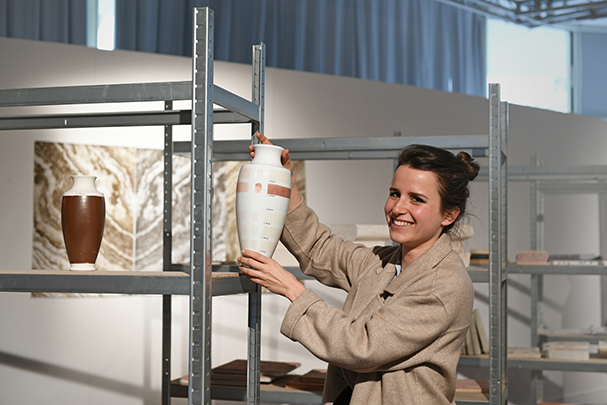
Textilising the built memory through architectural rubble’s in situ recycling (2022)
Anna Saint Pierre, CIFRE funded PhD with the architectural agency SCAU, prepared at Ensadlab, Ecole des Arts Déco, PSL University. Supervision: Jean-François Bassereau, Aurélie Mosse, Eric de Thoisy.
Although it has undergone a fundamental shape change, can a demolished building transmit some memory through the preservation of its materials ? How to enhance demolition rubble in order to confer them textile properties ? How to work out rubble as creative materials in the context of an architectural project ? The results of this demonstrate how a textile and material design research can contribute to the emergence of new methods of conception and transmission of an architectural heritage. By perceiving demolition dumpsters as future deposits, these results modify the appreciation of their content and more largely of the urban environment. The architectural agency SCAU, its projects and its (de)construction sites, have been used as fields of study and collaborations to create hybrid knowledge on the in situ recycling of architectural waste, notably the Manufacture de Sèvres laboratory, the École des Mines ParisTech and the Saint-Gobain company Research Department.Through some analogies between textile structures and building structures, this thesis has contributed to the development of alternative solutions to the landfill of all or part of buildings in order to renew the architecture materiality. The building deconstruction at increasingly fine scale, the unfolding of the practice in workshops and at the agency have led to the development of a series of design tools based on sampling. Gravathèques – rubble libraries –, granulometric palettes, second-life materials ranges have been gathered under the form of a specialized material library, which takes into account the mnemonic function of materials, classified by address, history and affordance. Thus, the construction end-of-life materials have been reconsidered in order to be used again, as for instance a brick fragment which has successively become pigments, ceramics, enamels, fabrics, cords, terrazzos, gabions, coatings, rammed earth, etc.
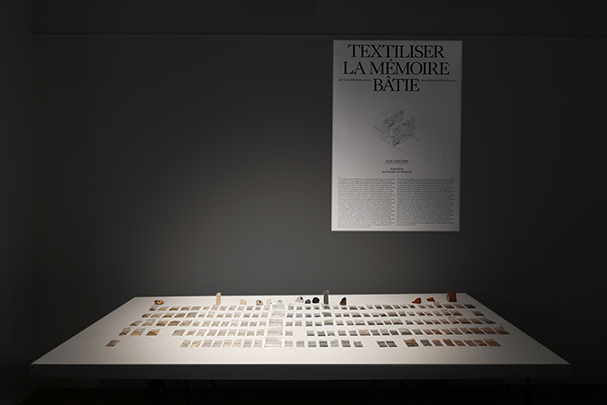
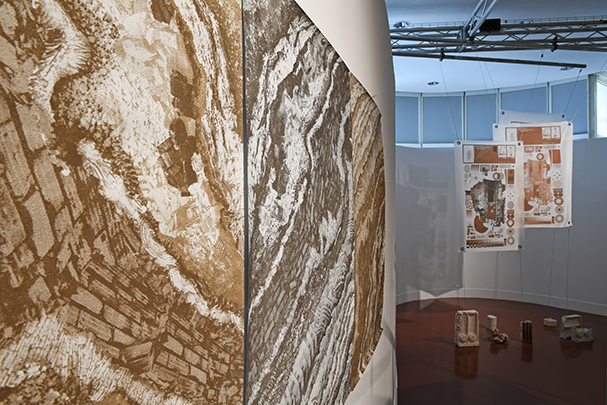
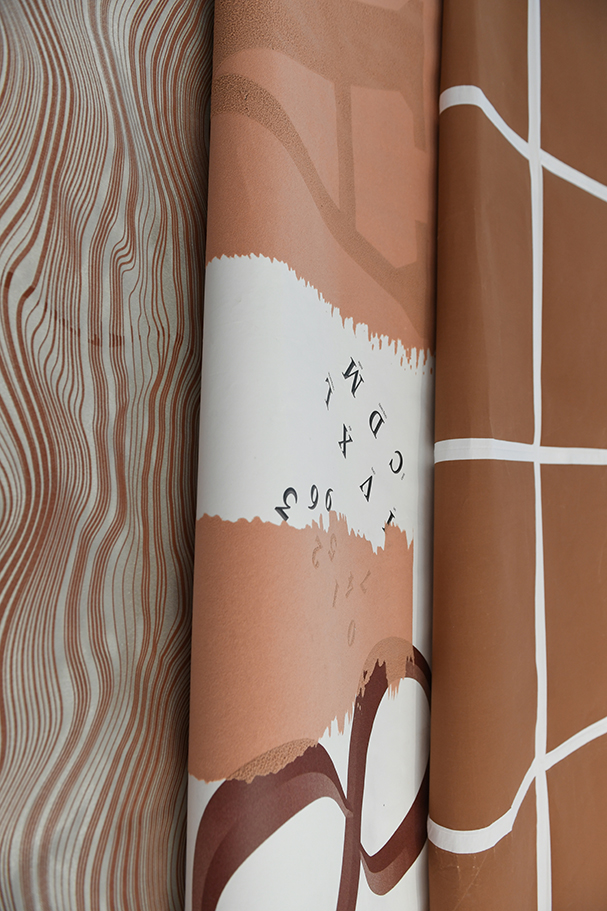

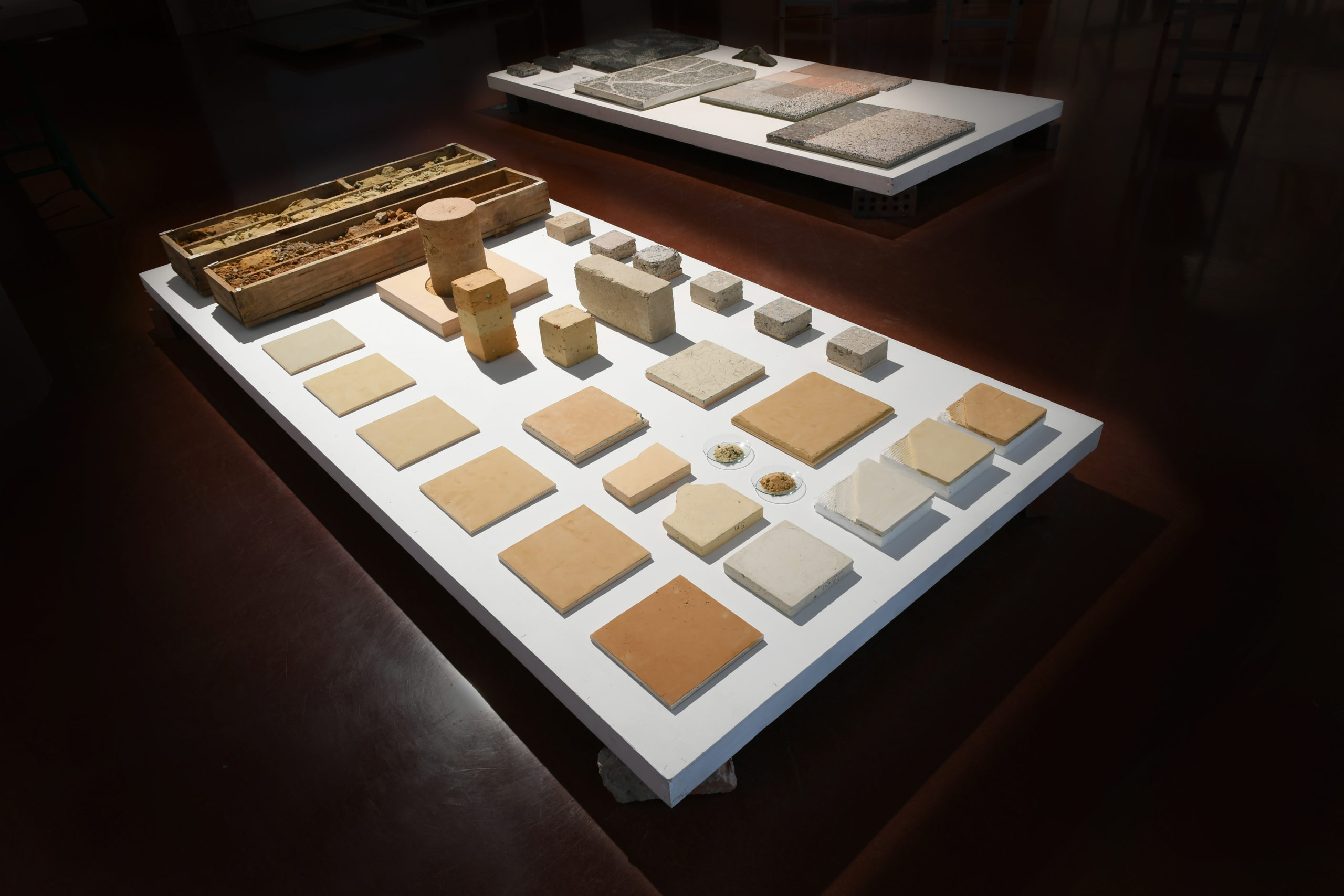

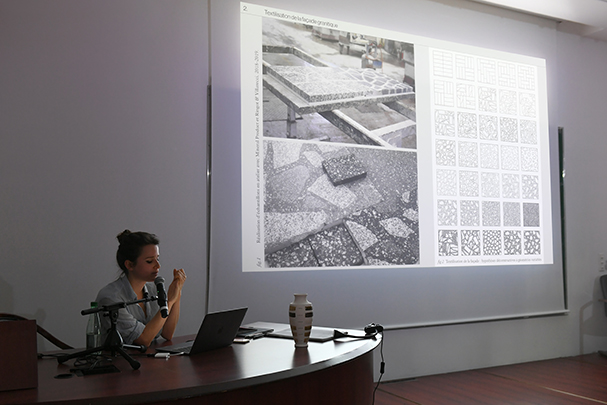

Read the PhD thesis
- Saint Pierre, A., 2022, Textiliser la mémoire bâtie par la réutilisation in situ des déchets architecturaux, PhD thesis, Ecole Nationale Supérieure des Arts Décoratifs – PSL.
Related publications
- Saint Pierre, A., Mosse, A., Bassereau, J.F., 2020, The Textilisation of Rubble as an Embodied Reflection on the Site-Specific Architectural Memory of Les Petites Affiches’, Journal for Textile Design & Research Practice, Special Issue: Textile Intersections, December 2020
- Mosse, A., 2020, ‘Textile transitions: Time as a material for Soft Matters’ design practice’, In Montagna & Carvalho (eds), Textiles, Identity and Innovation: In Touch, London: CRC Press /Taylor & Francis. Proceedings of the 2nd international conference on Textiles, Identity and innovation, (D_TEX 2019), Lisbon, Portugal, 19-21th of June 2019, pp.389-396.
- Saint Pierre, A., Bassereau, J.F., Mosse, A., 2019, Les Petites Affiches: Textilisation of architectural memory through the transformation of rubble’, Textile Intersections, 12-14th of September 2018, Loughborough University London
- Des déblais au textile, Paris: SCAU
Awards
- Grands prix de la création de la ville de Paris 2022 – Emerging Design Talents
More pictures on Anna’s Instagram and on her website.